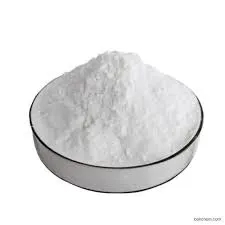- Afrikaans
- Albanian
- Amharic
- Arabic
- Armenian
- Azerbaijani
- Basque
- Belarusian
- Bengali
- Bosnian
- Bulgarian
- Catalan
- Cebuano
- Corsican
- Croatian
- Czech
- Danish
- Dutch
- English
- Esperanto
- Estonian
- Finnish
- French
- Frisian
- Galician
- Georgian
- German
- Greek
- Gujarati
- Haitian Creole
- hausa
- hawaiian
- Hebrew
- Hindi
- Miao
- Hungarian
- Icelandic
- igbo
- Indonesian
- irish
- Italian
- Japanese
- Javanese
- Kannada
- kazakh
- Khmer
- Rwandese
- Korean
- Kurdish
- Kyrgyz
- Lao
- Latin
- Latvian
- Lithuanian
- Luxembourgish
- Macedonian
- Malgashi
- Malay
- Malayalam
- Maltese
- Maori
- Marathi
- Mongolian
- Myanmar
- Nepali
- Norwegian
- Norwegian
- Occitan
- Pashto
- Persian
- Polish
- Portuguese
- Punjabi
- Romanian
- Russian
- Samoan
- Scottish Gaelic
- Serbian
- Sesotho
- Shona
- Sindhi
- Sinhala
- Slovak
- Slovenian
- Somali
- Spanish
- Sundanese
- Swahili
- Swedish
- Tagalog
- Tajik
- Tamil
- Tatar
- Telugu
- Thai
- Turkish
- Turkmen
- Ukrainian
- Urdu
- Uighur
- Uzbek
- Vietnamese
- Welsh
- Bantu
- Yiddish
- Yoruba
- Zulu
Novemba . 18, 2024 12:06 Back to list
terramycin 100 dosage for cattle
Terramycin 100 Dosage for Cattle
Terramycin, a well-known antibiotic, has been extensively used in veterinary medicine for the treatment of various bacterial infections in cattle and other livestock. The active ingredient in Terramycin is oxytetracycline, which belongs to the tetracycline class of antibiotics. It is effective against a wide range of Gram-positive and Gram-negative bacteria, making it a valuable tool for managing health in cattle herds. When properly administered, Terramycin can help prevent and control infections, thereby reducing the incidence of morbidity and mortality in cattle.
Indications for Use
Terramycin is commonly prescribed for treating respiratory infections, enteritis, and other systemic bacterial infections in cattle. It is also used in the control of certain diseases associated with infectious agents. Besides, it has applications in feedlot cattle for promoting growth and improving feed efficiency. However, appropriate timing and dosage are crucial to maximize its efficacy while minimizing potential side effects.
Dosage Guidelines
The dosage of Terramycin 100 for cattle varies based on several factors, including the animal’s weight, the severity of the infection, and the specific condition being treated
. Generally, the dosage is recommended as follows- Treatment of Bacterial Infections The typical dosage is 2 to 4 mg per pound of body weight, administered orally or via injection. For example, a 500-pound calf might receive between 1000 to 2000 mg of oxytetracycline. This treatment may be repeated every 24 to 48 hours, depending on the veterinarian's advice and the animal's response to therapy.
- For Acute Conditions A higher initial dose may be applied, followed by a maintenance dose. It is critical to adhere to the prescribed regimen to ensure that the antibiotic reaches therapeutic levels in the bloodstream to effectively combat the infection.
- Duration of Treatment Treatment duration can vary but typically lasts 3 to 5 days. It is essential to complete the full course of antibiotics even if the animal starts to show signs of recovery, as stopping treatment prematurely can lead to the resurgence of the infection and the development of antibiotic-resistant bacteria.
Administration Methods
terramycin 100 dosage for cattle

Terramycin 100 can be administered in several ways, including
1. Intramuscular Injection This is often the preferred method for acute conditions, providing rapid absorption and effective plasma concentrations of the medication.
2. Oral Administration In some cases, Terramycin is mixed with feed or water. This method is commonly used for herd treatment, ensuring that all affected animals receive the medication simultaneously.
3. In Water Medication This is particularly effective for large groups of animals where individual treatment is impractical. Proper dosing calculations must be made based on average water consumption to ensure all animals receive the necessary medication.
Safety Considerations
While Terramycin is generally safe when used correctly, it is crucial to follow all safety guidelines. Possible side effects include gastrointestinal disturbances, allergic reactions, and, in some cases, disruption of gut flora. Moreover, the use of antibiotics in livestock raises concerns about antimicrobial resistance, which can impact human health. Therefore, cattle producers are encouraged to collaborate with veterinarians to ensure responsible usage.
Withdrawal Period
Following treatment with Terramycin, a withdrawal period must be adhered to before the meat or milk can enter the food supply. This period is critical to ensure that the antibiotic levels have cleared from the animal’s system, safeguarding consumer health. The standard withdrawal time for oxytetracycline in cattle is typically around 28 days for meat and 48 hours for milk. It is important for producers to keep these withdrawal times in mind to comply with regulations and avoid economic loss.
Conclusion
Terramycin 100 is a potent antibiotic that plays a significant role in the health management of cattle. When used responsibly and according to veterinary guidance, it can effectively treat infections and promote healthier herds. Farmers must acknowledge the importance of dosages and follow all recommended practices to not only achieve optimal therapeutic outcomes but also contribute to the ongoing fight against antibiotic resistance. Through diligent management, cattle producers can maintain the health of their herds and ensure the safety of their products for consumers.
-
Guide to Oxytetracycline Injection
NewsMar.27,2025
-
Guide to Colistin Sulphate
NewsMar.27,2025
-
Gentamicin Sulfate: Uses, Price, And Key Information
NewsMar.27,2025
-
Enrofloxacin Injection: Uses, Price, And Supplier Information
NewsMar.27,2025
-
Dexamethasone Sodium Phosphate Injection: Uses, Price, And Key Information
NewsMar.27,2025
-
Albendazole Tablet: Uses, Dosage, Cost, And Key Information
NewsMar.27,2025













